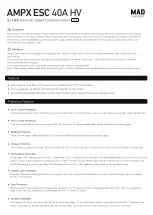
Welding procedure
MIG/MAG welding
46
099-00L104-EW501
17.01.2022
6.1.2 coldArc / coldArc puls
Heat-reduced, low-spatter short arc for high dimensional stability welding and brazing of thin metal sheets
with excellent gap-bridging.
Figure 6-5
After selecting the coldArc process
> see 5.6 chapter
you benefit from:
• Less distortion and reduced discolouration thanks to minimised heat input
• Considerably reduced spatter thanks to virtually power-free material transfer
• Easy welding of the root passes in all plate thicknesses and in all positions
• Perfect gap bridging even with inconsistent gap widths
• Manual and automated applications
You can make use of these properties after selecting the coldArc process (see the "Selecting a MIG/MAG
welding task" chapter).
With coldArc welding, it is important to ensure good quality wire feeding because of the welding filler ma-
terials being used!
• Equip the welding torch and torch hose package to suit the task! ( and the operating instructions for
the welding torch.)
This function can only be enabled with the PC300.NET software.
(See operating instructions for the software)
6.1.3 forceArc / forceArc puls
Heat-reduced, directionally-stable and powerful arc with deep fusion penetration for the upper power
range.
Figure 6-6
• Smaller included angle due to deep penetration and directionally stable arc
• Excellent root and sidewall fusion
• Secure welding also with very long stick-outs
• Reduced undercuts
• Manual and automated applications
You can make use of these properties after selecting the forceArc process
> see 5.6 chapter
.
As with pulse arc welding, it is important to make sure of a good welding current connection.
• Keep welding current cables as short as possible and ensure that cable cross-sections are adequate!
• Fully unroll welding current cables, torche hose packages and, if applicable, intermediate hose packa-
ges. Avoid loops!
• Use welding torches, preferably water-cooled, that are suitable for the higher power range.
• Use welding wire with adequate copper coating when welding steel. The wire spool should have layer
spooling.
Unstable arc!
Welding current cables that are not fully unrolled can cause faults in the arc (flickering).
• Fully unroll welding current cables, torch hose packages and, if applicable, intermediate hose
packages. Avoid loops!
















































